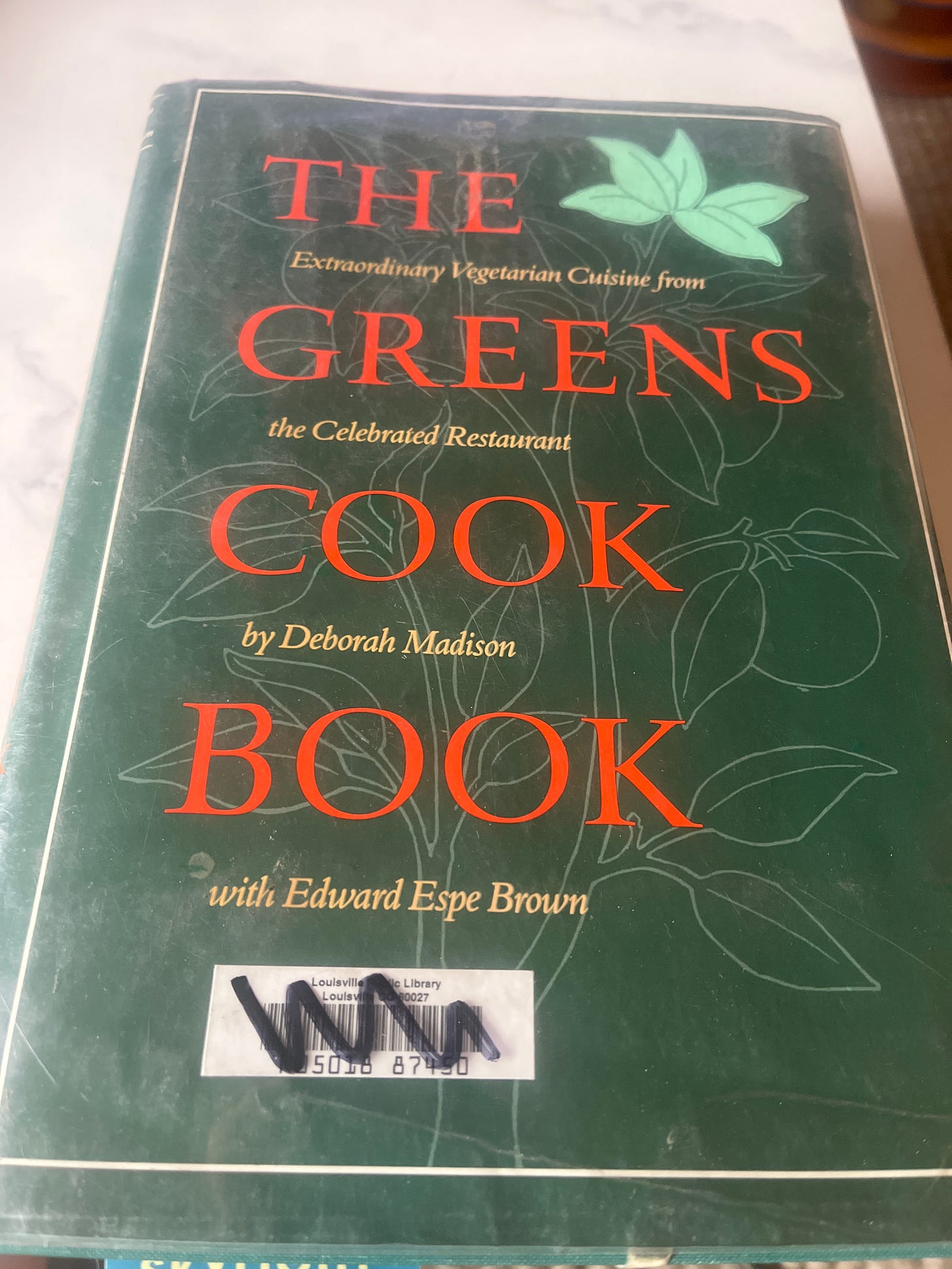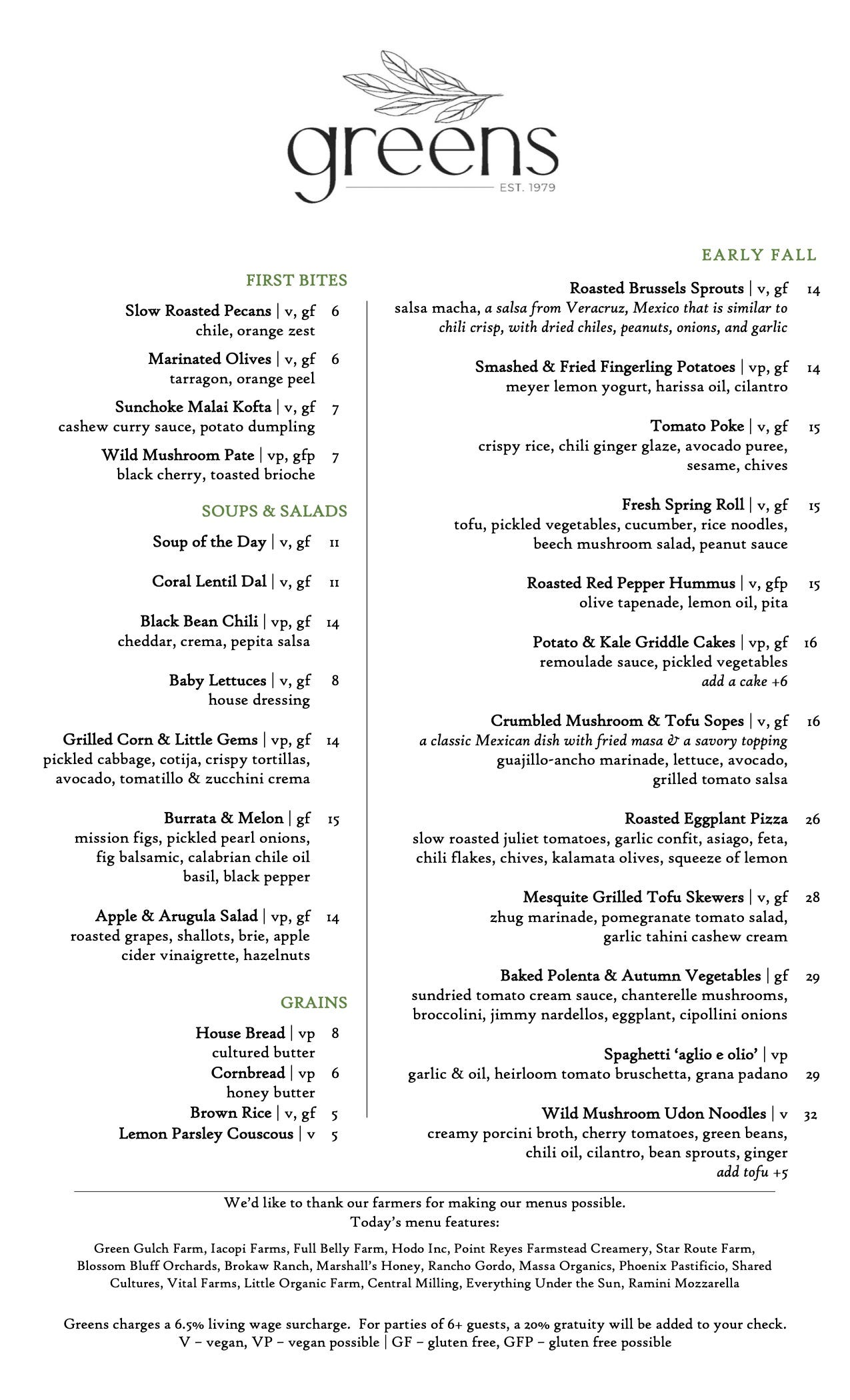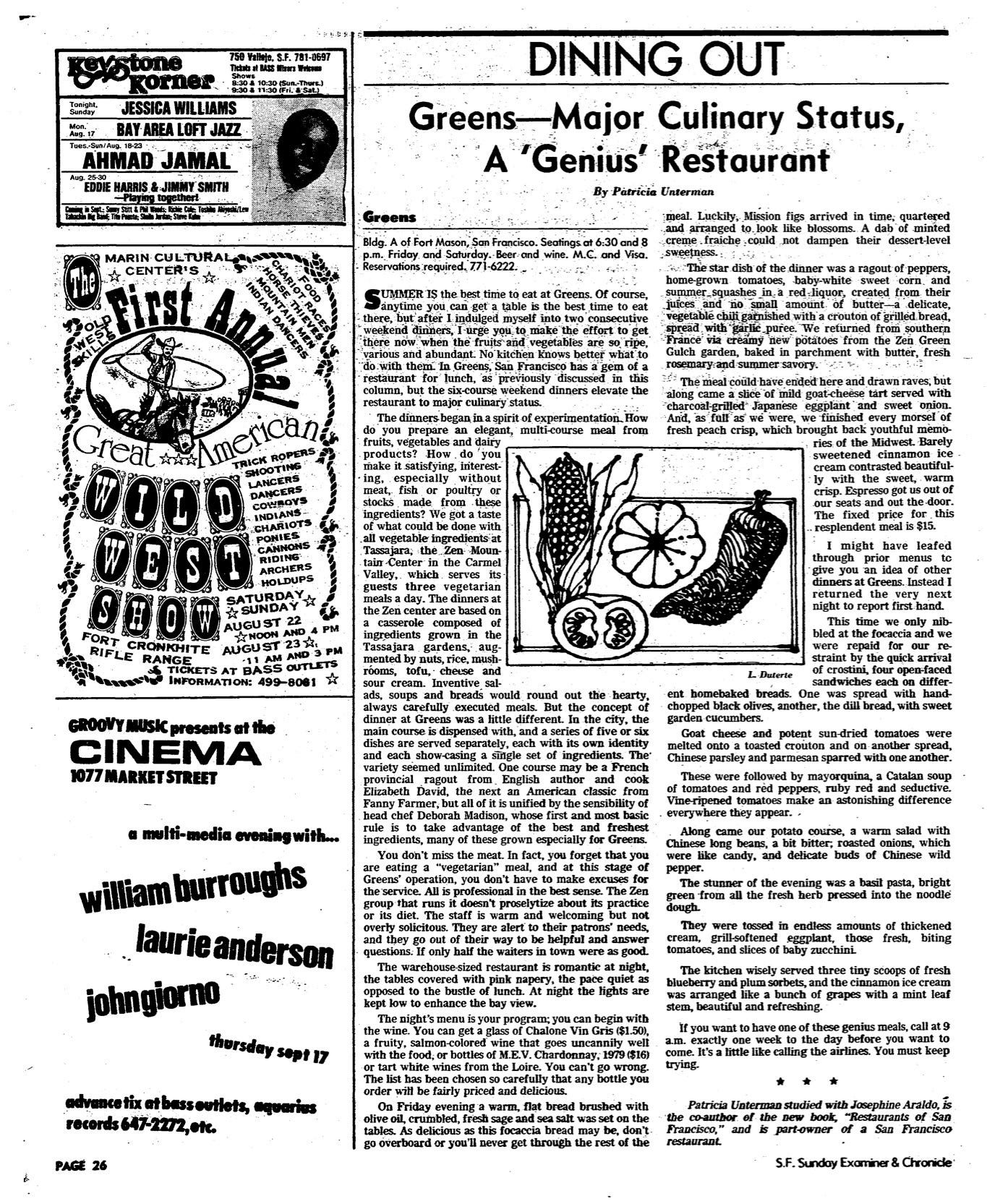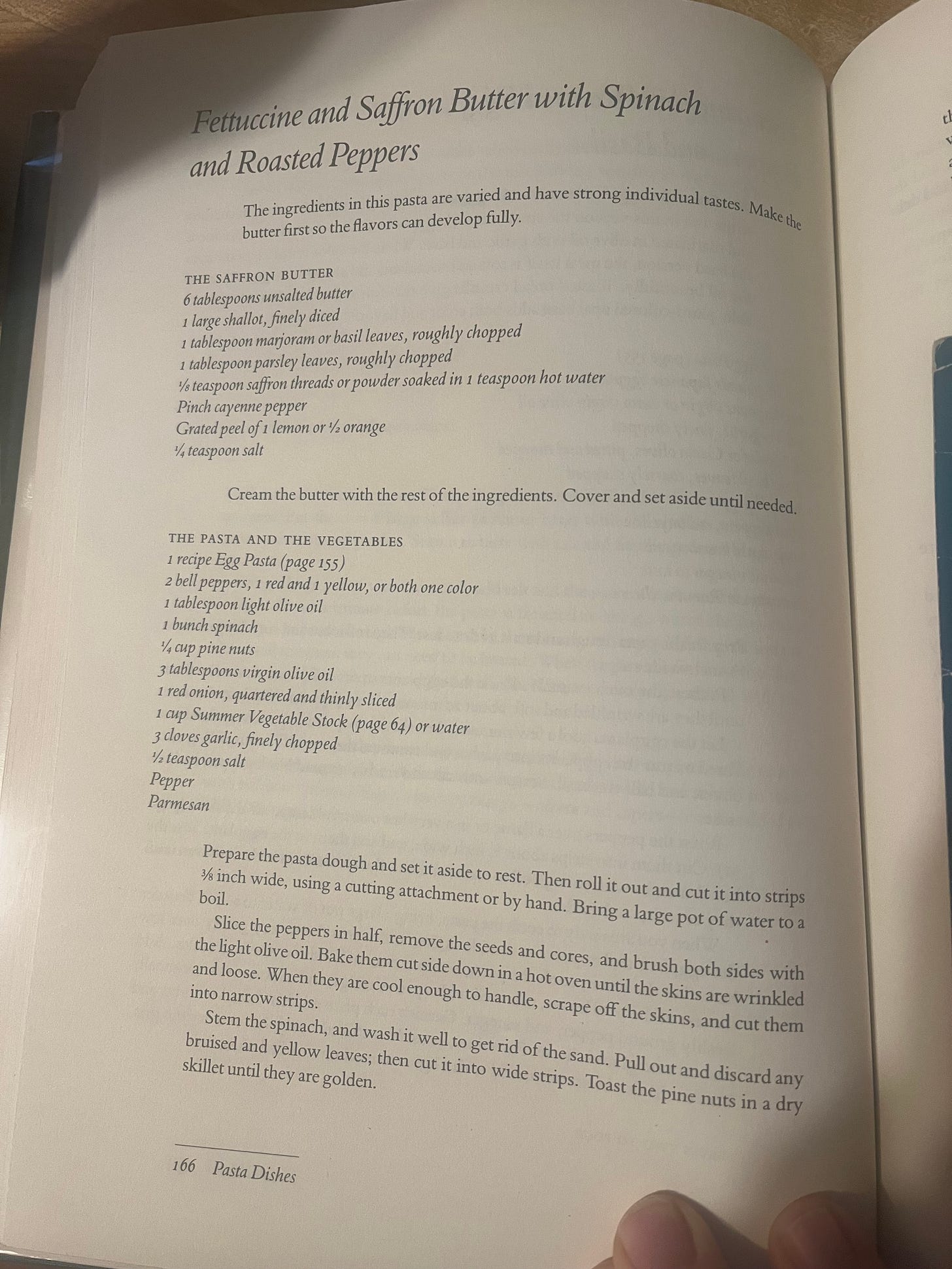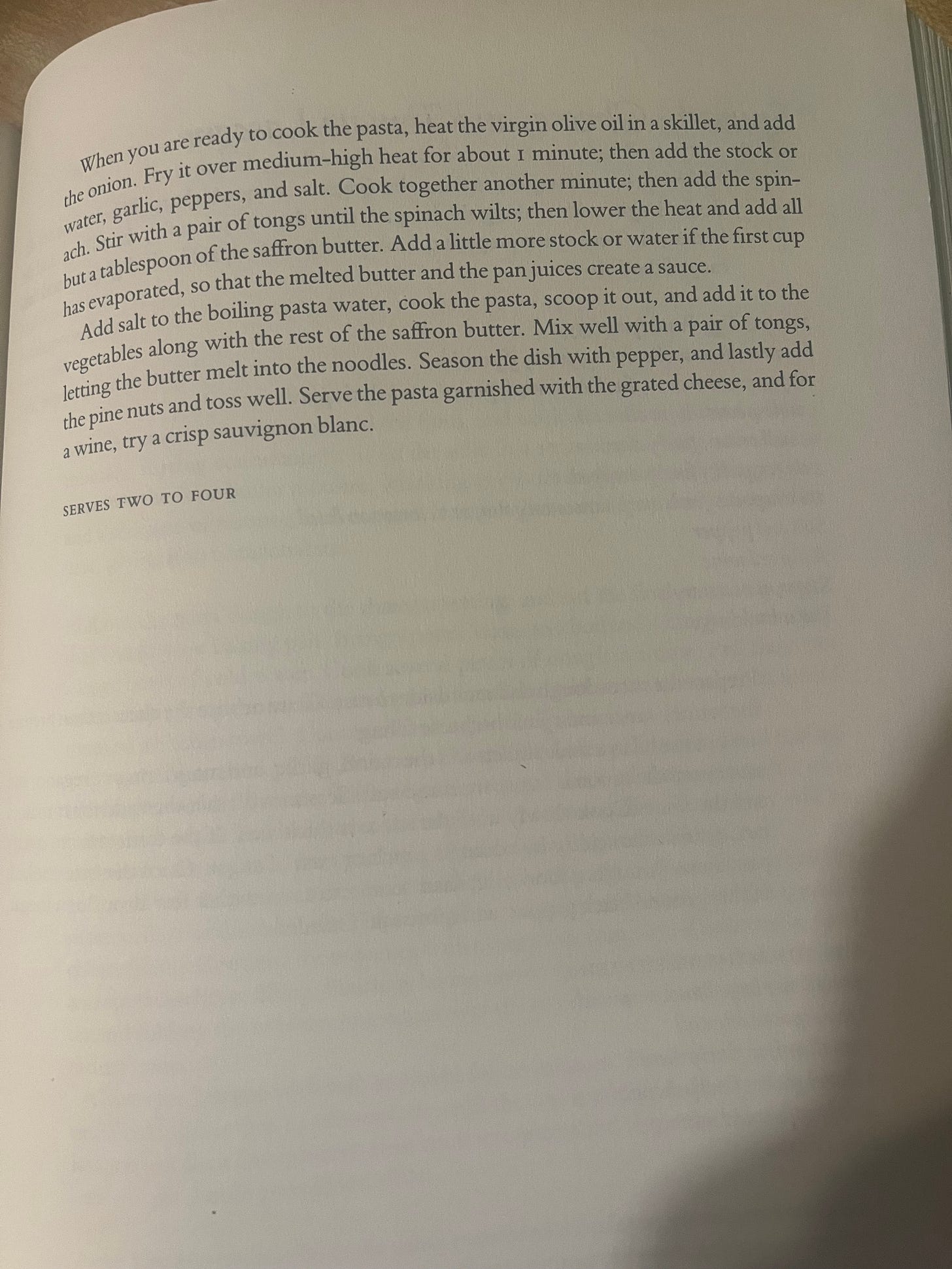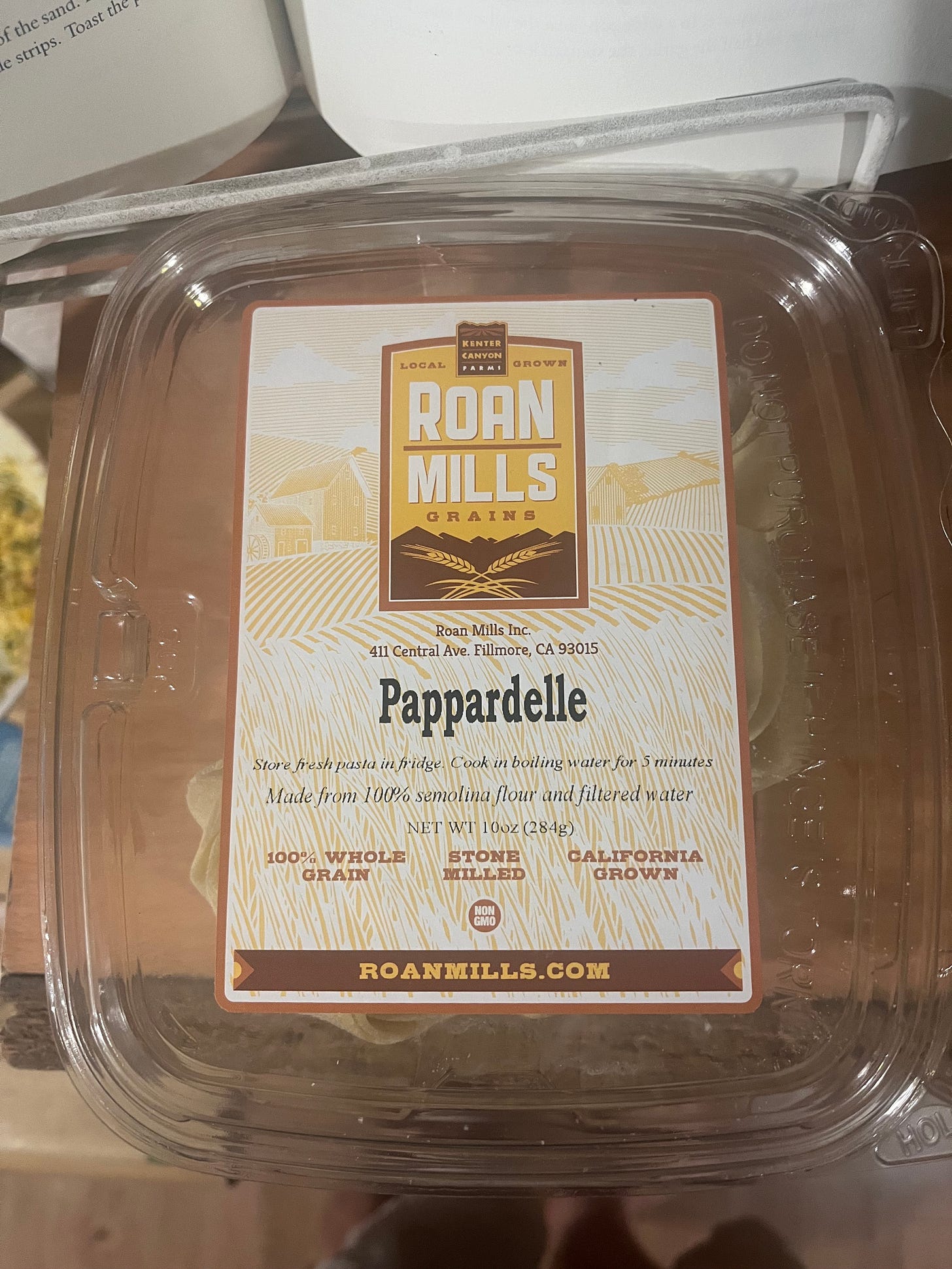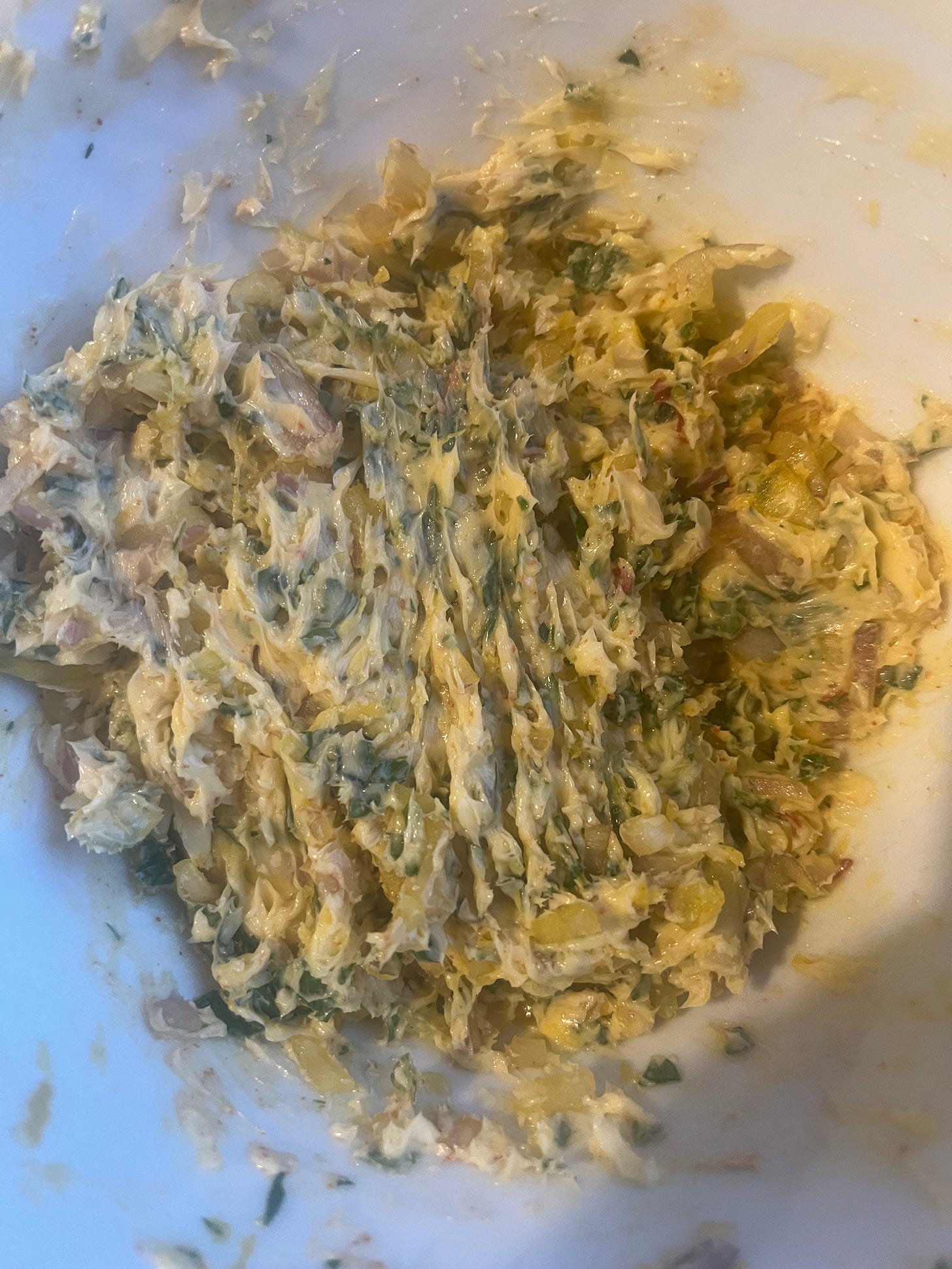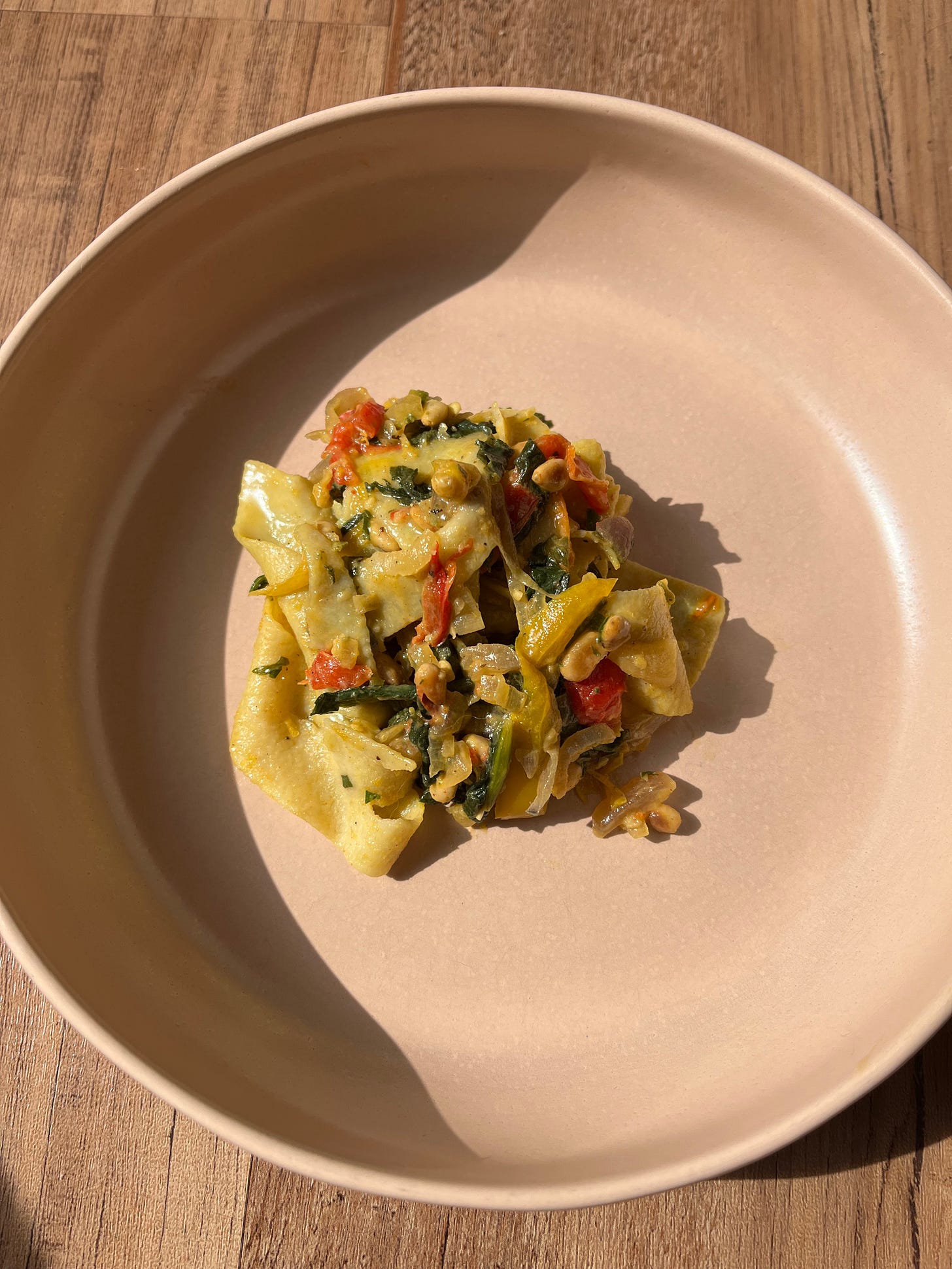There is a lot to think about and a lot to get done, but to be efficient does not mean to be hurried, and to be unhurried does not mean to sit in a lawn chair. Take the time to give each task its due—it comes out in the food: a generosity of spirit. — Edward Espe Brown in the preface of The Greens Cookbook.
Greens was the first vegetarian restaurant I knew existed. It’s on the ocean, part of San Francisco’s Fort Mason. Fort Mason was an actual US Army base until the late 60s, when it closed and fell into disrepair. In the 70s it reopened to the public as a performing arts space, shops, galleries, parking garage, etc. San Francisco did the lib gentrifying “converted arts district” brewery-core walkable city thing before Mayor Pete was even a glint in his Marxist father’s eye. Greens became its anchor business, its high-traffic reliable Cheesecake Factory. I went once, on my sixteenth birthday, almost 20 years after it had opened. By then, it was an institution and not exactly trendy. I remember having a really good time and that the interior design was very “woodsy”. I don’t remember exactly what I ate, just that there were lots of veggies and maybe some puff pastry.
I assumed Greens had closed in the intervening years, but it’s still around. I’m not sure how well it’s doing — Opentable is showing a lot of availability for this coming weekend — but somebody is enjoying the views of Alcatraz and the surprisingly reasonable prices (a $28 mesquite grilled tofu-skewer entree, in this economy? a steal).
A May 2024 review in SF Gate is titled: When this waterfront SF restaurant opened in 1979, it was groundbreaking. What about now? Now? Not, it seems, quite as groundbreaking. Which makes total sense. No restaurant, no piece of art or culture, can be groundbreaking for 45 years. But what’s frustrating me about the menu (I can’t speak for the reviewer) is that it splits the difference between trying to stay up on current food trends and staying true to its original character. Those $28 tofu skewers come with a zhug marinade and garlic tahini cashew cream. They might as well have spray-painted the wooden floors Millennial pink. I’ll bet you anything there’s a big bottle of Fly By Jing in that kitchen. Granted, keeping founding chef Deborah Madison’s original recipes on the menu would not have been a sound economic or culinary plan either. Current chef Katie Reicher deserves her moment in the sun. But zhug and garlic-tahini cashew cream are reactive to already played-out trends.
The first review of Greens I could find was from the August 16th, 1981 edition of the San Francisco Chronicle. It’s much more glowing.
This was before a liquor license, before an à la carte menu, before David Chang made “figs on a plate” into a punchline about the Bay Area food scene. Deborah Madison proudly served a plate of mission figs, quartered and dabbed with creme fraiche, as dessert. The 1981 review, by Patricia Unterman, notes English chef Elizabeth David and American home-ec stalwart Fannie Farmer as influences on Madison. Madison was also obviously influenced by Alice Waters and Chez Panisse, where she worked before opening Greens. But Madison is/was a Zen Buddhist and a vegetarian, eschewing meat and opening up the menu to more international influences than Waters, who skewed mostly French, did back then. Greens, maybe because of its location in the City, and maybe because it hit its stride in the 1980s rather than the 1970s, became more of a finance bro hotspot than Chez Panisse ever was.
The Greens Cookbook was published in 1987, at the height of the restaurant’s popularity. Like most restaurant cookbooks, it claims to simplify its recipes for the home cook, but most of them are too fussy and involved for a regular weeknight meal. Many of the recipes are Italian or French inspired, but its forays into Indian and Mexican cooking seem a bit more “authentic” (Indian Vegetable Stew with Yellow Dal, Black Bean Chilaquiles) than anything in Moosewood Cookbook. That’s probably a combination of the era (1980s vs 1970s), location (San Francisco vs. Ithaca), and Madison’s fine-dining aspirations.
I wanted to cook something that felt very 1987. There were a few prime candidates — which hopefully I’ll tackle in future newsletters — but I settled on pasta, which forms one of the major chapters in the book. Fettuccine and Saffron Butter with Spinach and Roasted Peppers. After last week’s mostly failed experiment, I stayed very close to the original recipe. Saffron has a reputation for being super-expensive, a luxury item. But nowadays, you can get a few strands for $5 at Trader Joe’s or two whole grams for double that at my local Indian market. Shoutout to India Sweets and Spices, the only place left in my neighborhood (Del Taco aside) where you can get a full, satisfying meal for less than $10.
Yeah, I didn’t make pasta from scratch. I’ve never made pasta from scratch. Maybe I will, at some point. But it’s so easy to buy fresh pasta, made by someone who knows what they are doing. My farmers market herb people, Kenter Canyon Farms, also mill grain under the nom de pain Roan Mills. They sell fresh pasta — $7 for 10oz — more than a pound of Barilla but not a bad deal. They didn’t have fettuccine in stock (too 1987), but they did have pappardelle, which is just a little fatter.
The other item I wanted to pick up at the herb guy was fresh marjoram, the primary flavor in the sauce besides the saffron. I know the recipe says you can substitute basil, but it was almost November and marjoram sounded a more mysterious than boring old basil. A quick test: imagine the taste of basil. Pretty easy. Now imagine the taste of marjoram. Can you do it? I couldn’t. The herb guy was out, as were two local Whole Foods, a Vons, an Albertsons, a Ralph’s, and a Jons. I wasn’t about to give up — I was halfway to the giant Hollywood farmers market, where someone was sure to have marjoram — when I passed by the flashy new supermarket on Western and Franklin, called Lazy Acres. It’s vibe is pre-Bezos Whole Foods, for rich people who can shop at Erewhon but have a tiny bit more dignity. They had marjoram. Kenter Canyon Farms marjoram. I wouldn’t have to brave the parking on Sunset.
Other deviations from the recipe. I obviously didn’t try to make my own “Summer Vegetable Stock” after last week’s mushroom broth fiasco. I also didn’t roast the bell peppers in the oven before throwing them in the pan. Does it make the flavor more complex? Probably. But this is a perfect example of these recipes being just a little too cheffy for the home cook.
I reduced the olive oil by one tbsp, and I should have reduced the amount of butter, but I didn’t. Everything else I did to the letter of the law. I refrained myself from amping up the garlic and adding my beloved chile flakes and lemon juice. Salt Fat Acid Heat this was not. More like Fat Fat Fat Marjoram. Maybe my saffron was a bit old, but I couldn’t taste much of it over the power of the marjoram. Now to attempt to describe the flavor. Marjoram isn’t as earthy as oregano. It almost has a spearmint, floral, licorice thing going on. It’s good, and people should cook with it more. People should cook with all the cold weather herbs more: chervil, borage, savory. They’ve been supplanted, at least in American cooking, but the more Mediterranean flavors of basil, rosemary and thyme.
Fresh pasta does really make a difference, doesn’t it? A very 80s assortment of flavors. The toasted pine nuts and bell peppers can stay. Weirdly, the parmesan was the flavor that seemed to clash with everything else. But back then, people were probably shaking the Green Kraft Can rather than grating on the good stuff.




